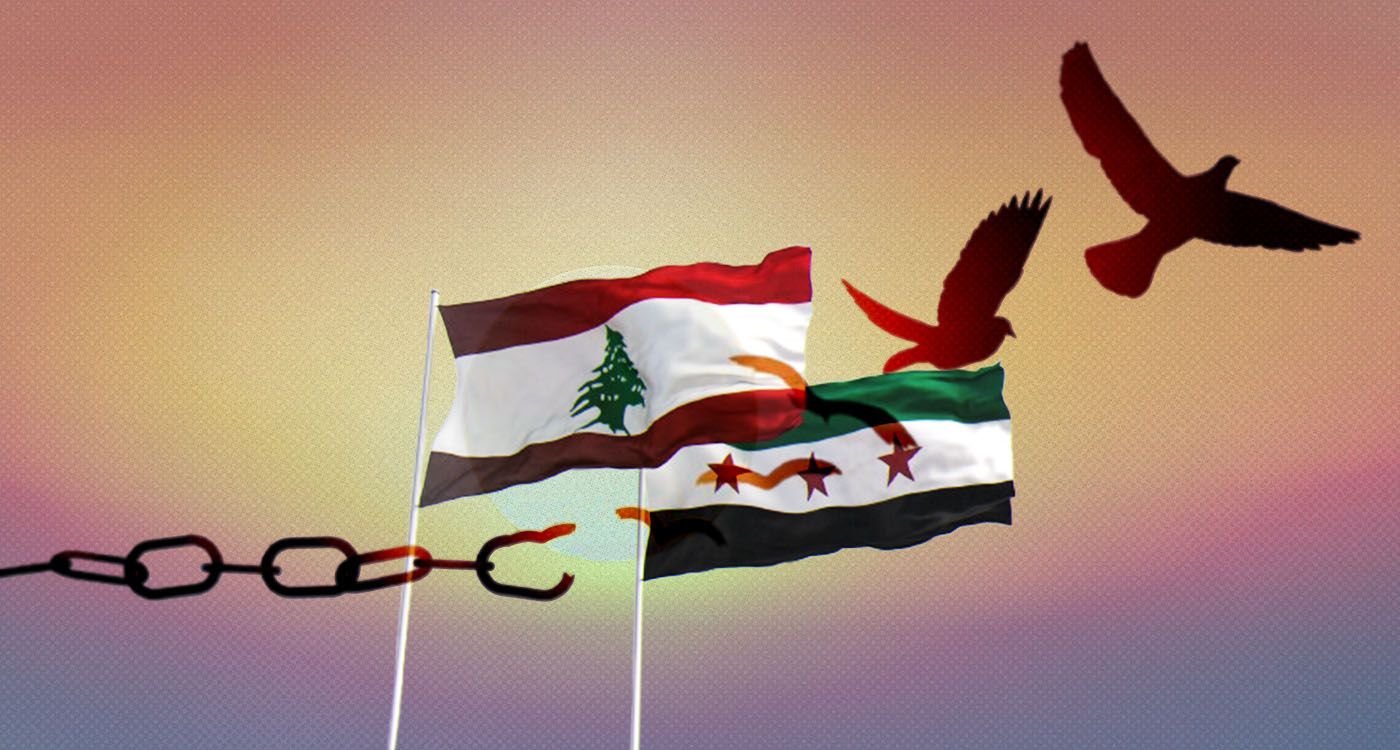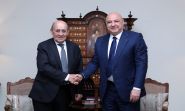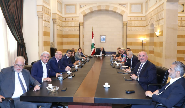
The destruction of the operational platforms of Iranian subversion politics in the Near East is not yet complete, as none of the concerned countries has been able to oversee a path to stabilization. Syria, with its overwhelming reconstruction and national reconciliation assignments, has a long way to go before steadying its course. Lebanon is still plagued by the waywardness of the Shia community, which struggles to come to terms with the downfall of its murderous dystopia and its destructiveness. Their state borders remain under the sway of open cycles of violence, and they are unable to bring their volatility to a standstill. Obviously, the shifting tectonics of a highly destabilized region are not by any means helpful, unless the simmering upheavals abate.
Lebanon’s instability is due to the delirious collective mindset of the Shia community that has a hard time reconciling with the idea of its military defeat after four decades of religious indoctrination, radical militancy, organized criminality, and mandated wars conducted on behalf of a Shia regional domination policy led by the Islamic regime in Tehran. The Israeli systematic destruction of the power infrastructures and projections has led to a state of collective denial and a hysterical mindset that hobbled its ability to readjust to reality and bury the delusions of four decades of political hubris, institutionalized delinquency, and inaptitude to regain a certain sense of civility, which enables it to reengage the other Lebanese communities and find its way back to the national and international communities.
The psychotic foreclosures are hobbling its ability to reengage domestic and international political life in a realistic way. The Shia community, by and large, refuses to acknowledge its military defeat, the unraveling of its political delusions, and to take responsibility for its self-induced disasters. Its failure on the outside mutates into a renewed attempt to control back the country, pursue the “Gleichschaltung Politik,” coordinate with radical Sunni Islamists and organized criminality, and open up the road for further destabilization and civil war. The rejection of the international resolutions (1701, 1559, 1680) and its continued adherence to an extraterritorial status open up the way for a final showdown with Israel and its incalculable consequences. This trajectory not only threatens regional stability but also poses a significant risk to global security. As tensions escalate, the potential for a broader conflict looms, drawing in neighboring nations and increasing the stakes for international diplomacy.
The newly established executive has lost credibility in no time, the Shia domination politics is hobbling governance, the economic and social fortunes of the country are dramatically falling, and the chances of peace are subsiding by the day. The viability of Lebanon is at stake, and the chances of normalization are questioned more than ever.
The meteoric takeover of power by the radical Islamists of « Hay’at Tahrir al-Sham » was dumbfounding and left us wondering about the incoming political evolutions. This ambiguity was soon dissipated when their leader, Ahmad el-Chareh, demonstrated his willingness to normalize all along. His political credo seemed to reconcile with a regime of political moderation where pluralism is acknowledged and reckoned with in relative terms.
The reconstruction of a severely destroyed country presents daunting challenges, as the means for such an undertaking—financial or operational—are out of reach. The sobering experience of a warlord, his political realism, and the dire constraints of a devastated country had a decisive impact on the transformation of his worldview. However strong his leadership, he is challenged by internal rivalries, international jihadists, Islamic radicalism, and the vested interests of various competitors. The quietist transition quickly gave way to retributive politics, random terror targeting the Alawite community mainly, challenging Druze and Christian security, and questioning Kurdish autonomy. However accommodating to religious and ethno-national pluralisms, he has failed, so far, to deal with other denominational groups on equal footing and to distance himself from the conventional religious arrogance of the Sunni majority nurtured through years of political minority and a rehabilitated sense of moral superiority.
The inability to reengage the ethno-national and religious pluralism on the basis of an open and institutionalized dialogue betrays the incapacity to overcome the demeaning institutional asymmetries and religious political culture that relegate minority Islamic groups and non-Muslims to a second-class citizen status. These grave human rights and civic departures weigh heavily on the projected reforms and on the regime’s credibility, which ties its eligibility for international development assistance to the improvement of its records in every respect related to them. Otherwise, the impact of the war induced massive migration, and the urgent need to address it through repatriation and developmental politics should serve as a model to emulate in similar crises.
However awkward the process may seem, el-Chareh appears to understand the critical importance of his international rehabilitation and its impact on Syria’s future. Whereas the Hezbollah radicals, in spite of their dismal defeat, are rehashing the debilitating ideological incantations and their devastating effects. Nonetheless, the overall geopolitical predicament spanning Iran and the Near East is being decisively shaped by the Iran war and its revolutionary consequences.




Comments